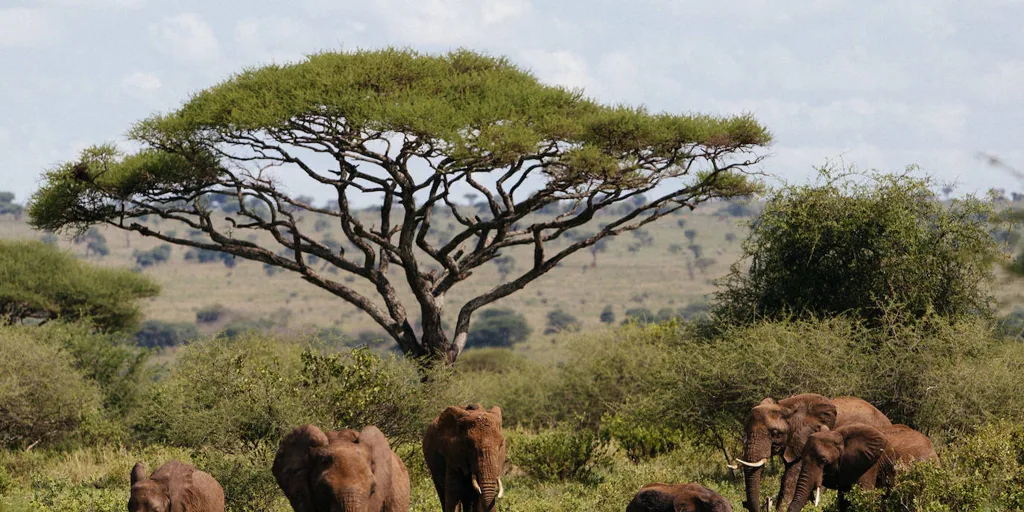No, people don't exterminate the planet’s megafauna – Muricas News
 No, people don't exterminate the planet’s megafauna – Muricas News
[ad_1]
No, people don't exterminate the planet’s megafauna – Muricas News
[ad_1]
Practically 50,000 years in the past, our ancestors needed to deal everywhere in the world with a collection of gigantic animals, with sizes that dwarf even the biggest creatures at present. Three-meter-tall cave bears, lions as tall as a horse, gigantic four-meter-tall elephants, mammoths, woolly rhinos, mastodons, large birds and marsupials, practically 900-pound saber-toothed tigers… the complete checklist. it could be countless.
Collectively, all these mighty beasts are given a generic title: Megafauna. And the overwhelming majority of them disappeared from the face of the Earth in a fleeting geological second: the interval between 50,000 and about 12,000 years in the past. The so-called ‘Quaternary Megafauna Extinction’ occurred, furthermore, virtually similtaneously the arrival on the scene of one other harmful species: ours.
Any animal weighing greater than 45 kg is taken into account a megafauna (it could not sound like a lot, however think about a rodent with that weight), and in that quick interval of life historical past, as much as two-thirds of all genera of animals had been misplaced. giant mammals of the world. Among the many attainable causes, climatic modifications are being thought of, however the concept of extreme looking by our ancestors is just gaining power.
Now, and to raised perceive what drives the completely different species to develop to turn into monumental, or to shrink till they lose half or extra of their dimension, and the way that dimension is said to their abundance, Juan Luis Cantalapiedra, from the Universidad de Alcalá, and Faysal Bibi, from the Leibniz Institute for Evolution and the Science of Biodiversity, have turned their eyes to Africa to review a for much longer interval. Thus, utilizing measurements of 1000's of African fossil enamel, they've managed to reconstruct the dimensions and abundance at every second of the big mammals that lived on the darkish continent over the past 10 million years. The research has simply appeared within the journal ‘Science’.
Bigger dimension, smaller inhabitants
Amongst different issues, the research reveals that previously there was a relationship between the dimensions and abundance of a species that's similar to the one which exists within the current, indicating that the elemental ecological processes that govern the construction of communities of dwelling beings has remained virtually unchanged over time.
Above 45 kg, the researchers discovered proof that abundance decreases as dimension will increase, a sample that aligns with the so-called ecological ‘metabolic scaling rule’, by which bigger species have inhabitants densities. decrease than the smaller ones. Nevertheless, the researchers detected a departure from the anticipated ecological sample: mammals between 15 and 45 kg had been far fewer in quantity than anticipated, each in dwelling and fossil communities. That is interpreted as a ‘signature’ of savannah habitats (the place forest-dwelling monkeys and small antelopes are uncommon).
And the massive shock comes
The most important shock, nonetheless, got here from inspecting how the relationships between abundance and dimension had been altering over time. Cantalapiedra and Bibi, in actual fact, discovered that animal communities older than 4 million years had significantly extra giant people and a better proportion of whole biomass in bigger dimension classes than newer communities. .
This ‘superabundance’ of very giant people, with elephants weighing over 10 tons, is unmatched in any of at present’s ecosystems. However since 4 million years in the past there was a gradual lack of giant people within the fossil file, reflecting the long-term decline within the range of enormous mammals from the late Pliocene and Pleistocene, leading to impoverished communities. and ‘miniaturized’ that we all know at present.
The research due to this fact confirms the concept the lack of African megafauna has very deep temporal roots, and that calls into query that the decline in megafauna was primarily as a consequence of human actions.
Whereas it's true that the growth of people world wide through the late Pleistocene and Holocene (the final 100,000 years) coincided with the extinction of many giant animals, the analysis helps the concept such megafaunal losses, thus besides in Africa, they started a lot earlier, about 4 million years in the past. That's, lengthy earlier than fashionable people existed. As an alternative, the research highlights environmental components, such because the long-term decline in international temperatures and the growth of tropical grasslands, as attainable drivers of megafauna extinctions.
plant productiveness
The researchers additionally discovered that the lack of giant people and the restructuring of biomass distributions in African giant mammal communities might be associated to declines in main productiveness, that's, the flexibility of vegetation to provide meals. Utilizing a well-established relationship between mammalian tooth shapes (morphological traits) and plant productiveness (internet main productiveness) at present, the researchers had been in a position to calculate the productiveness of African vegetation prior to now. And so they discovered a decline of about two-thirds in productiveness because the late Miocene (5 million years in the past), a sample that's repeated world wide and that would have considerably diminished the surroundings’s potential to feed giant mammal communities. , which led to a discount in its range and the accelerated extinction of the biggest species.
The work, due to this fact, opens new methods to know the dynamics of ecosystems and the complicated interactions between people, species and their environments. And it additionally marks a big milestone in our understanding of the extinctions of African megafauna and their causes.
[ad_2]




0 comments: